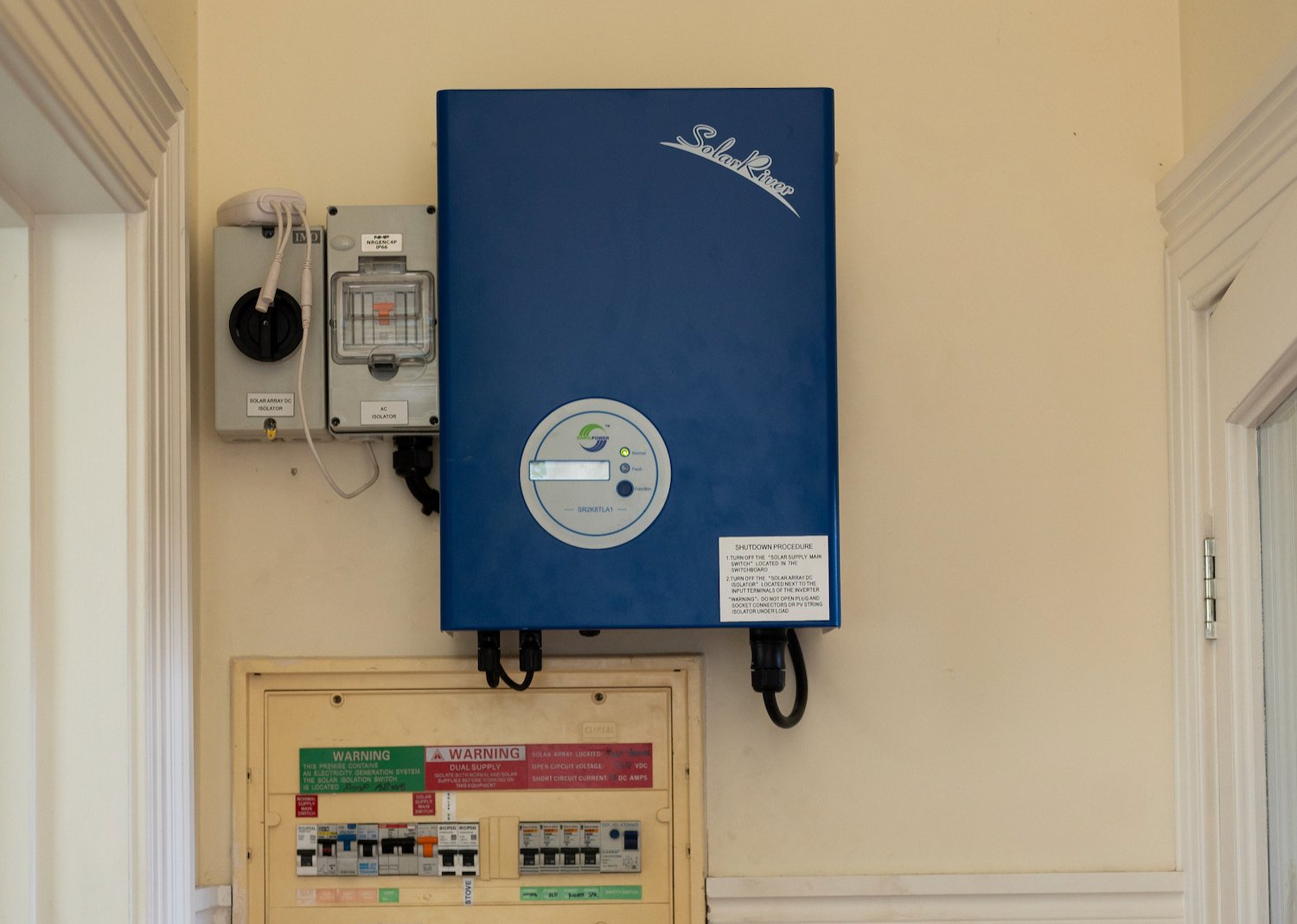Batteries
Solar batteries store excess electricity generated by solar panels during the day, for use at night or when the sun isn’t shining.
Batteries can either be added to an existing rooftop solar system or installed together with solar panels in a new system. Most Australian household solar batteries are lithium-ion, like the batteries used in smartphones and electric vehicles.

How does it help you save money and reduce emissions?
Batteries save you money by enabling you to buy less energy from the grid and reduce emissions by enabling households to use more clean solar energy and less energy which is partly generated by coal and gas.
The economic viability of solar batteries is improving, with payback periods decreasing from 19 years in 2016 to an estimated 7.5 years in 2025. Battery storage is particularly economical for households who use a lot of power at night. Potential savings and payback periods can be estimated using online calculators such as SunSPOT, developed by UNSW and the Australian PV Institute.
How do I get it?
As with any new technology, solar batteries can appear complex. Do as much research as you can to understand the options, benefits and complexities of solar batteries. There are many excellent government, industry, and retailer websites with detailed information about solar storage options and stories of householders who’ve successfully installed solar battery systems. For example, the Clean Energy Council oversees an Approved Solar Retail Program authorised by the Australian Competition and Consumer Commission (ACCC). It is designed to help consumers find reputable solar and battery suppliers.
Things to consider when buying a battery:
Avoid deals that sound too good to be true, offers from unsolicited phone sales and leaflets in the letter box as they are often not quality products or installers.
Do your homework on the options available, the interaction between rooftop solar and home batteries. Always seek expert advice.
It is difficult to get a reliable battery for under $10,000. However, Solar Victoria has interest-free loans of up to $8,800 for eligible homeowners.
Investigate if you can control the times of charging and discharging.
Check if the 5kW feed-in limit from solar applies in your suburb. This limits how much electricity can be exported to the grid. Talk to the supplier to understand the implications and limitations.
If purchasing a battery is not economical for your household, using excess solar to heat your electric hot water system during the day or pre-heating/cooling your home with a reverse cycle air conditioner for the evening could be a better option.
Resources
Solar Victoria – Solar batteries explained
Solar Victoria - Battery buyers guide
Solar Victoria – Costs and benefits of a solar battery.
Clean Energy Council – How to choose a Retailer/Installer
Clean Energy Council – Approved Products
Battery FAQs
-
While only a small proportion of Australian households are currently using solar batteries, this is changing rapidly as technology develops and costs go down. Batteries can be relatively expensive, so it’s important to investigate which battery system is best for your household and estimate the payback period – how long it will take for the savings from lower energy bills to cover the upfront cost of your battery system. Most reputable installers should be able to provide an analysis of potential payback periods.
-
The Victorian Government provides interest-free loans of up to $8,800 for solar batteries. Repayments are made over four years. To qualify the applicant must be the homeowner; combined household income must be under $210,000 pa; and the property value must be under $3 million. Installers must also be on Solar Victoria’s authorised retailers list.
-
Talk in detail to several reputable providers about your needs and obtain at least two to three written quotes. Make sure the installer you choose has Clean Energy Council accreditation. Batteries must also be on the Clean Energy Council’s approved product list with correct grid support parameters.
-
When choosing a solar battery, pay close attention to the warranty offered by the manufacturer. Look for solar batteries with extended warranties, ideally one that lasts longer than the calculated payback period.
-
Solar battery size is measured in kilowatt-hour (kWh) units. Most household solar batteries range from 4 kWh to 14kWh, with the average around 10kwh. The size of a home’s rooftop solar panel system usually dictates the size of the battery that can be paired with it, along with the home’s energy consumption and usage. Batteries need space and ventilation and positioning away from potential hazards. They can be installed indoors or outdoors in accordance with relevant regulations. A common location for solar batteries is in the garage out of direct sunlight.
-
With proper installation and care solar batteries are a safe choice. Solar storage batteries must be installed by A Grade electricians with a Clean Energy Council endorsement for solar batteries. Solar batteries need regular cleaning and maintenance, space and ventilation, and positioning away from potential hazards.
-
Solar batteries can provide back-up power during an outage but must be configured to do so. Not all battery systems can do this. There are two common solar and battery set-ups which operate differently during an outage. The first set-up will power priority circuits such as lighting and fridges during an outage. The other option can power the entire house but depletes the battery much faster. An accredited installer can help determine which of these is right for your household.
-
Not yet. There has been a lot of discussion in the media about the possibility of vehicle to home (V2H) and vehicle to grid (V2G). These technologies are relatively new, expensive and only available in a few EV models. It is also currently only approved for installation and use in South Australia. Other states haven’t given an indication of timing. V2G hardware suppliers and vehicle manufacturers have also not given any set dates for release into Australia.
